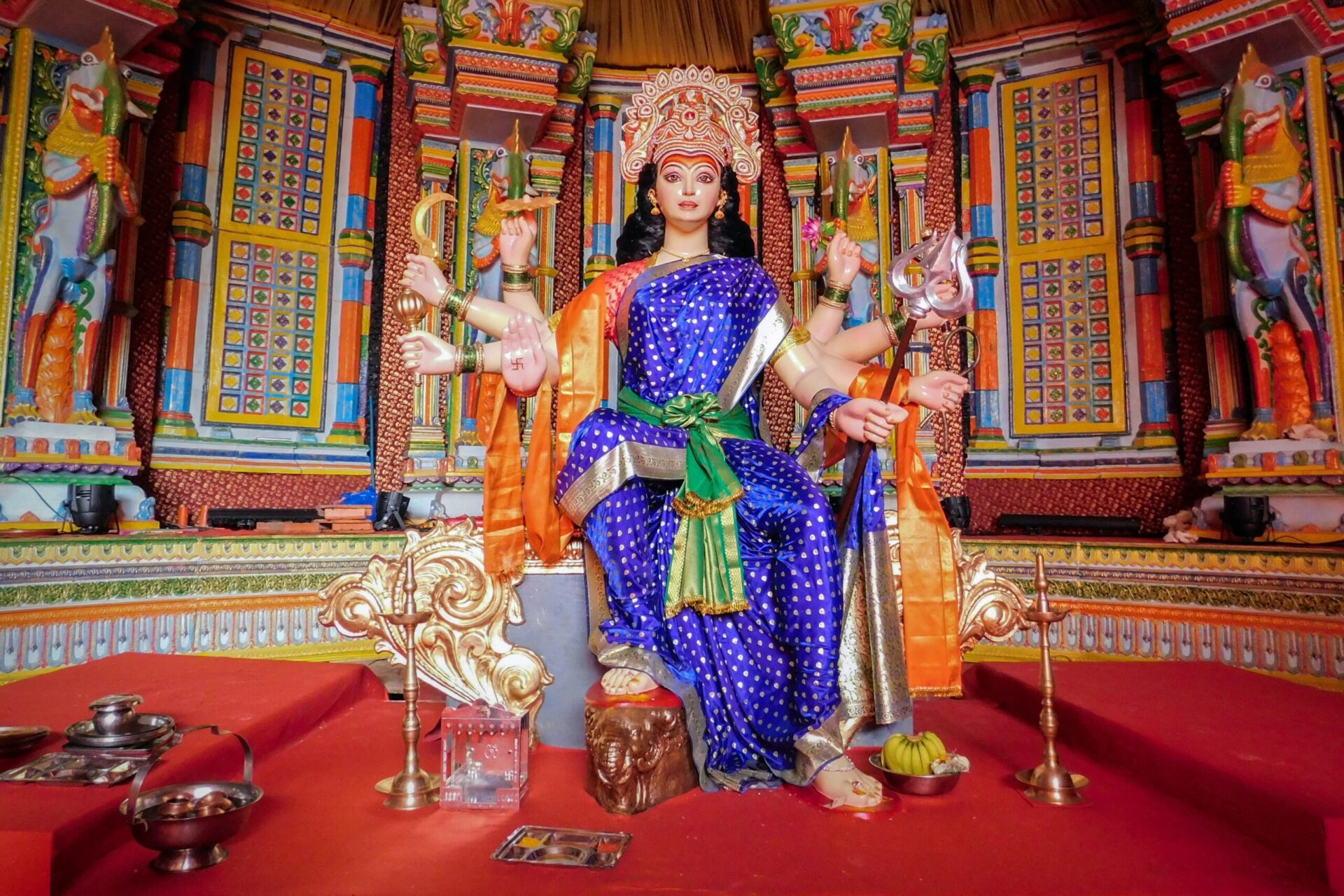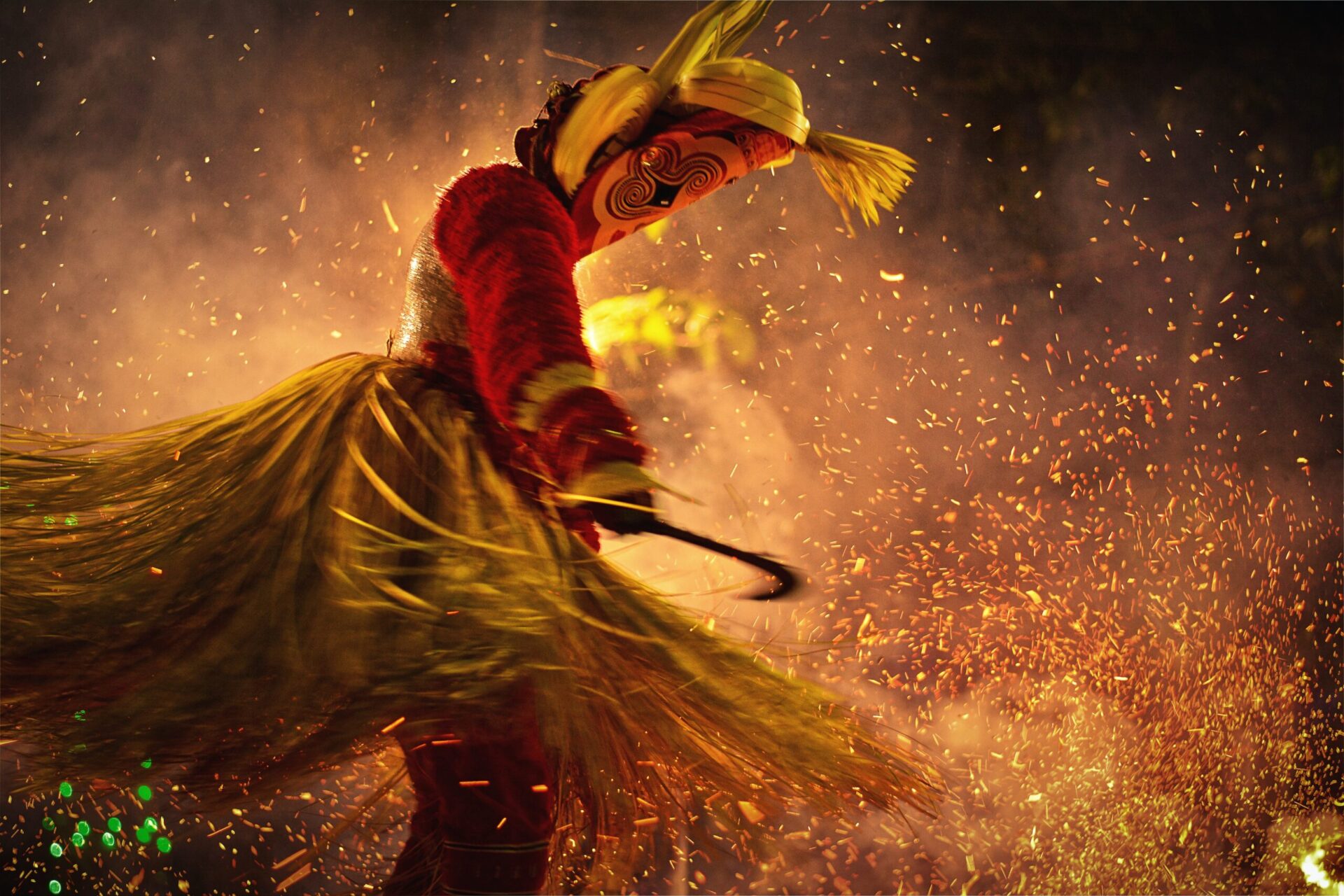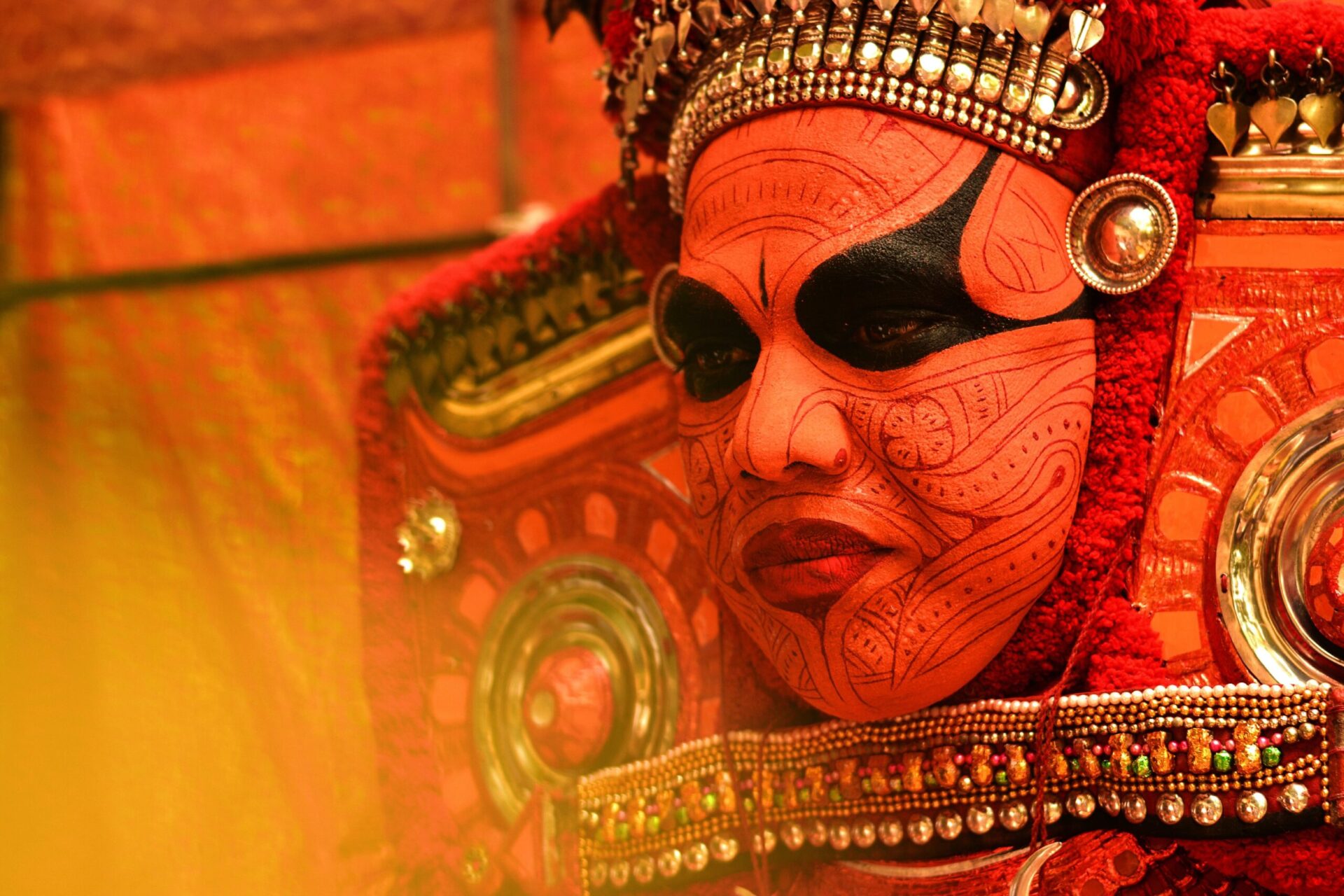Hinduism, one of the world’s largest religions, has a fascinating perspective on life’s ultimate journey: death. Hindus believe in the concept of reincarnation, a cycle of birth, death, and rebirth that is driven by the law of karma. According to their beliefs, after death, the soul detaches from the physical body and embarks on a new adventure, driven by the actions and deeds of the previous life. Join us as we delve into the profound spiritual beliefs of Hindus and explore the possibilities that await the soul in the realm beyond.
Table of Contents
Understanding the Concept of Atman
Definition of Atman
In Hinduism, the concept of Atman refers to the individual soul or self, which is believed to be eternal and divine. Atman is considered the true essence of an individual and is thought to transcend the physical body. It is the spark of consciousness that connects each individual to the ultimate reality, known as Brahman.
Evolution of the Concept of Atman in Hinduism
The concept of Atman has evolved throughout the history of Hinduism. In the early Vedic period, Atman was primarily seen as an individual entity, separate from the divine. However, as Hindu philosophy and spirituality developed, the understanding of Atman shifted towards a more interconnected and universal perspective. It came to be seen as a reflection of the divine essence present in all living beings.
Significance of Atman in Hindu Beliefs
The concept of Atman holds immense significance in Hindu beliefs. It serves as a reminder that every individual is not just a physical body, but also possesses a deeper, eternal essence. This understanding has profound implications for how Hindus perceive and engage with the world around them. It promotes compassion, empathy, and the recognition of the divine spark within every being.
Samsara: The Cycle of Rebirth
Understanding the Concept of Samsara
Samsara is the belief in the continuous cycle of birth, death, and rebirth that every individual soul experiences. According to Hinduism, this cycle is governed by the law of karma, which is the accumulated result of one’s actions in previous lives. Samsara is characterized by the eternal soul (Atman) taking on different physical bodies, experiencing the consequences of past actions, and striving towards spiritual liberation.
The Cyclic Nature of Life and Death in Samsara
In the concept of Samsara, life and death are viewed as interconnected aspects of this eternal cycle. Death is not seen as the end, but rather as a transition or a doorway to a new life. Hindus believe that the soul, Atman, continues its journey after death, carrying with it the karmic imprints from past lives and the potential for growth and spiritual evolution.
Breaking free from Samsara
The ultimate goal for Hindus is to break free from the cycle of Samsara and attain Moksha, liberation from the cycle of birth and death. They seek to overcome the cycle of suffering and rebirth by realizing their true nature as divine beings and merging with the ultimate reality, Brahman. This liberation is considered the highest spiritual attainment and the end of the soul’s journey through Samsara.

Concept of Karma and Its Impact on Afterlife
Definition of Karma
Karma, a central concept in Hinduism, refers to the law of cause and effect. It is the idea that every action, thought, and intention has consequences, not only in this life but also in future lives. The law of karma operates in a cyclical manner, governing the circumstances and experiences an individual encounters in their current and future lives.
How Karma Influences Life After Death
According to Hindu belief, karma influences the life after death by determining the nature of the next life an individual will have. The accumulated karma of past lives shapes the circumstances and experiences one will encounter in their future incarnations. Positive actions and intentions lead to positive consequences, while negative actions and intentions lead to negative consequences. The state and condition of one’s mind at the time of death also play a significant role in determining the trajectory of the soul in the afterlife.
The Role of Righteousness and Morality in Karma
In Hinduism, righteous actions and moral behavior are considered essential for accruing positive karma. Following the path of Dharma, which encompasses moral duties, virtues, and righteous conduct, is believed to positively influence the karmic outcomes. Living a virtuous life filled with love, compassion, and integrity is seen as a means to create a positive karmic imprint, leading to a favorable afterlife and spiritual progress.
Moksha: The Liberation from the Cycle of Rebirth
The Philosophy of Moksha
Moksha, the ultimate goal of Hindu spirituality, signifies the liberation from the cycle of birth, death, and rebirth. It is the state of realizing one’s true nature as divine and merging with the ultimate reality, Brahman. Moksha is considered the end of the soul’s journey through Samsara and the attainment of eternal bliss and liberation from suffering.
The Paths Towards Achieving Moksha
There are various paths or yogas that lead to Moksha in Hinduism, each catering to different temperaments and inclinations. These paths include Karma Yoga (the path of selfless action), Bhakti Yoga (the path of devotion), Jnana Yoga (the path of knowledge and wisdom), and Raja Yoga (the path of meditation and self-control). Each path emphasizes different practices and techniques to guide individuals towards self-realization and liberation.
Moksha and the Ultimate Fear of Death
The pursuit of Moksha in Hinduism alleviates the fear of death and offers a profound understanding of the transient nature of physical existence. Hindus believe that the realization of one’s divine nature and the liberation from Samsara grants eternal bliss and freedom from the cycle of birth and death. This understanding helps individuals embrace death as a natural part of the spiritual journey and transcend the limitations of physical existence.

Realms of Existence in Hindu Afterlife
The Concept of Seven Higher Lokas
In Hinduism, the afterlife is believed to consist of various realms or Lokas that an individual’s soul can inhabit based on their karma. The seven higher Lokas, known as Svarga, are realms of celestial beings and divine entities. These realms are described as abodes of bliss and divine experiences, where individuals enjoy the rewards of their righteous actions and spiritual progress.
The Concept of Seven Lower Lokas
The seven lower Lokas, known as Patala or Naraka, represent realms of existence for those who have accumulated negative karma. These realms are associated with suffering and unfulfilled desires, where individuals undergo punishment for their negative actions. It is believed that individuals may stay in these realms temporarily before being reincarnated to continue their karmic journey.
Transmigration of the Soul through Lokas
Hinduism teaches that the soul transmigrates through different Lokas based on its accumulated karma. The soul may ascend to higher Lokas as a result of positive actions and spiritual growth, or descend to lower Lokas due to negative actions and unfulfilled desires. The transmigration through Lokas continues until the soul attains Moksha and breaks free from the cycle of reincarnation.
The Role of Deities in the Afterlife
Popular Deities Associated with Death and the Afterlife
In Hinduism, there are various deities associated with death and the afterlife. Lord Yama, the god of death, is believed to judge the souls upon death and determine their destinations in the afterlife. Lord Shiva, as the destroyer and transformer, is also closely associated with the cycle of life and death. Goddess Kali, with her fierce form, represents the power of time and liberation from the cycle of rebirth.
Practices and Rituals Dedicated to Deities
Devotional practices and rituals dedicated to these deities play a significant role in Hindu afterlife beliefs. Offerings and prayers are made to Lord Yama to ensure a favorable judgment in the afterlife. Devotees seek the blessings of Lord Shiva to transcend the cycle of birth and death. Rituals dedicated to Goddess Kali are performed to invoke her power and aid in the journey towards liberation.
The Intercession of Deities in the Soul’s Reincarnation Journey
Hindus believe that the intercession of deities can influence the course of the soul’s journey through the afterlife. Prayers, rituals, and acts of devotion are seen as ways to seek the protection and guidance of these deities, who can potentially assist in attaining a more favorable afterlife and supporting the soul’s progress towards liberation. The relationship between individuals and deities is considered dynamic and reciprocal, with the deities providing assistance to those who sincerely seek their support.

Rituals and Ceremonies After Death
Significance of the Antyeshti or Last Rites
Antyeshti, also known as the last rites, is a significant ritual performed after death in Hinduism. It is believed to guide the soul on its journey in the afterlife and ensure a peaceful transition. The last rites involve bathing and dressing the body, lighting the funeral pyre, and performing ceremonies to honor and offer prayers for the departed soul.
The Role of the Mourning Period
After the last rites, Hindus observe a mourning period to honor the departed soul and support the grieving family. This period varies in length, but typically lasts for thirteen days. During this time, family and close friends gather to offer prayers, perform rituals, and provide emotional support to one another.
Rituals Associated with Ancestor Worship
Ancestor worship is an integral part of Hindu culture, especially during festivals and important family milestones. Hindus believe that deceased ancestors remain connected to the family and can influence the living. Rituals, such as offering food, lighting a lamp, and performing ancestor ceremonies, are conducted to honor and seek blessings from ancestors. These practices strengthen the bond between the living and the deceased and serve as a way to remember and respect the ancestors.
Interpretations of Heaven and Hell in Hinduism
Hindu Concept of Swarga (Heaven)
In Hinduism, the concept of Swarga refers to a celestial realm where righteous individuals may go after death as a result of their good karma. Swarga is described as a place of immense beauty, joy, and divine blessings. It is believed to offer a temporary residence for the soul before its journey continues through Samsara.
Hindu Concept of Naraka (Hell)
The concept of Naraka in Hinduism represents realms or conditions of intense pain and suffering, where individuals undergo punishment for their negative actions and accumulation of bad karma. Naraka is not seen as a permanent destination but as a necessary expiation and purification process for the soul before it can continue its journey in Samsara.
Comparing Hindu Interpretations with Other Religions
The interpretations of heaven and hell in Hinduism differ from those in other religions in several ways. In Hinduism, heaven and hell are seen as temporary and cyclic rather than eternal. They are considered as realms or conditions influenced by an individual’s karma, which can change over time. Additionally, Hindu beliefs emphasize the potential for spiritual growth and liberation from the cycle of birth and death, whereas other religions may focus on rewards and punishments as final destinations.
Impact of Hindu Beliefs on the Perception of Death
Hindu Perspective towards the Fear of Death and Dying
Hinduism offers a unique perspective towards the fear of death and dying. The concept of reincarnation and the belief in the eternal nature of the soul provide a sense of continuity and reassurance. Hindus view death as a natural part of the soul’s journey through Samsara and believe that the soul continues its progress towards liberation in the afterlife. This understanding helps alleviate the fear of death, as it is seen as a transformative process rather than an end.
The Mandate of Dharma and its Influence on Death
The concept of Dharma, often translated as righteousness or duty, plays a significant role in influencing the perception of death in Hinduism. Hindus believe that living a life aligned with Dharma leads to positive karma and a favorable afterlife. This understanding encourages individuals to embrace their moral duties and live a virtuous life, knowing that it impacts their journey beyond death. The pursuit of Dharma instills a greater sense of purpose, which ultimately influences how Hindus approach and navigate the process of dying.
The Significance of Aging and Death in Hindu Scriptures
Hindu scriptures emphasize the significance of aging and death as integral aspects of human existence. The stages of life, known as Ashramas, including studenthood, householder, retirement, and renunciation, provide a framework for understanding the natural progression towards death. These stages are seen as opportunities for personal growth, self-discovery, and spiritual development. Aging and death are viewed as transformative moments for the soul, leading to deeper introspection and the cultivation of wisdom.
Critiques and Debates Surrounding Hindu Afterlife Beliefs
Criticism by Atheists and Materialists
Hindu afterlife beliefs have faced criticism from atheists and materialists, who argue that there is no empirical evidence to support the existence of an afterlife or the concept of karma. Skeptics question the idea of reincarnation and view it as a mere philosophical construct without any scientific basis. They assert that consciousness is a product of the brain and ceases to exist after death.
Debates within Theological and Philosophical Circles
Within theological and philosophical circles, there are ongoing debates and interpretations regarding the nature of the afterlife in Hinduism. Different schools of thought within Hindu philosophy present varying perspectives on the mechanics of reincarnation, the specific realms of existence, and the role of karma in shaping the afterlife. These debates contribute to a rich and diverse understanding of Hindu afterlife beliefs and encourage critical thinking and dialogue among scholars and practitioners.
Modern Interpretations of Hindu Afterlife Beliefs
In modern times, there has been a resurgence of interest in Hindu afterlife beliefs, both within and outside the Hindu community. Philosophers, scholars, and spiritual practitioners have explored and interpreted these beliefs through contemporary lenses. Some have sought to reconcile traditional Hindu concepts with scientific discoveries and psychological theories, contributing to an evolving understanding of the afterlife that resonates with the modern worldview.
In conclusion, Hindu beliefs about the afterlife encompass a multitude of concepts, including the eternal nature of the soul, the cyclic nature of life and death in Samsara, the impact of karma on the afterlife, the pursuit of Moksha, the role of deities, rituals and ceremonies after death, interpretations of heaven and hell, and the influence of Hindu beliefs on the perception of death. These beliefs have evolved over time, contributing to a rich tapestry of philosophical and spiritual thought within Hinduism. While there may be critiques and debates surrounding Hindu afterlife beliefs, they continue to shape the worldview, practices, and rituals of millions of Hindus around the world.